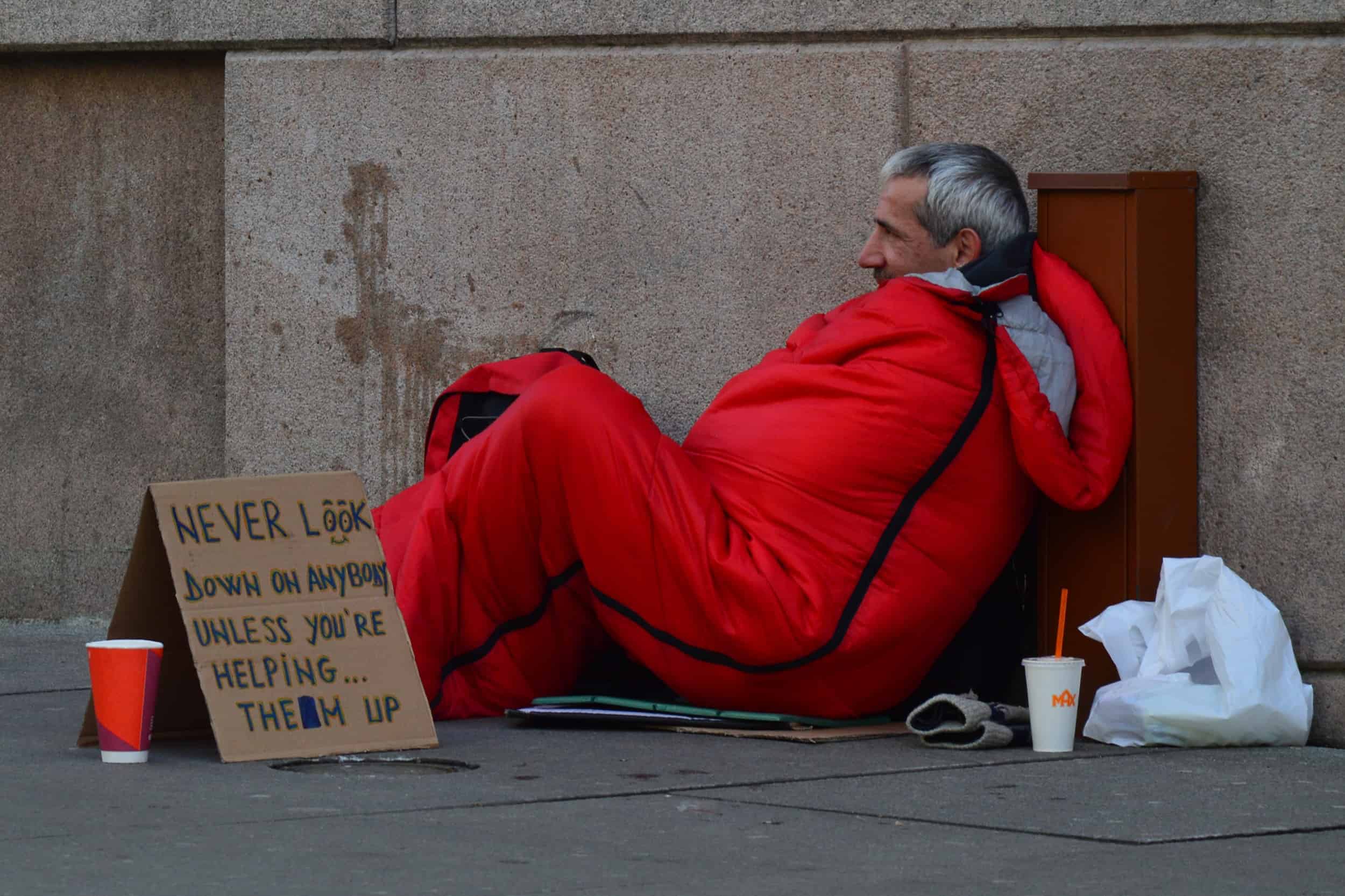Finding safe shelter is difficult for homeless
Exploring reasons why tent cities are safer than some shelters
Tent cities are on the rise in Edmonton, especially in the downtown core, and residents are taking notice.
According to the City of Edmonton, reports about tent cities have more than doubled since this time last year, increasing from 864 complaints or reports in 2018 to 1,900 this year. The reasons for the uptick are diverse and varied, such as an easier ability to report tent cities, issues in the shelters, lack of affordable housing, and visibility of the tent cities themselves. Tent cities are growing despite the fact that the rate of people experiencing homlessness has dropped by 42 per cent from its peak in 2008, and city shelters are operating at only 77 per cent capacity.
The reasons people experience homelessness are even more diverse. As more and more people live paycheque to paycheque, what may seem like small things such as a minor illness or an injury requiring time off from work can lead people to face unexpected homelessness. For those who are chronically homeless, mental health issues and substance abuse—which often go hand-in-hand—are some of the leading factors in them being unable to find stable housing.
The price of oil beginning to skyrocket 15 years ago was the start of Alberta’s latest, and most likely last, oil boom. With this boom came people from outside the province looking for work. As more people moved to the city, rent and housing prices increased. Many apartment complexes were converted to condos, removing them from the affordable rental market. As the costs rose, an increasing number of people not making oilfield wages could no longer afford housing and ended up on the street. According to Homeward Trust and Homeless Hub, homelessness peaked in Edmonton in 2008 and has dropped by 42 per cent to between 1,792 and 1,971. These numbers suggest the City’s initiative to eliminate homelessness was working, and taking stress off the city’s shelters.
Yet this spring, a homeless camp in the river valley consisting of nearly 500 people was dismantled, leaving the residents with nowhere to go. Many set up camp near 97 Street and 104 Avenue. According to Homeward Trust, 486 people are “sleeping rough”, a term used to describe those who sleep outside each night, and 407 are in emergency shelters, intended as short-term housing. Over 1,000 were using precarious or provisional housing options, such as staying with a friend or housed in institutions such as addiction recovery centres.
Many people do not want to stay in the local shelters. A woman, who requested she not be named, says the safest place for her is in the tent cities (camps), not the shelters. She cites theft and threats of violence as a couple of the reasons. As a single woman, safety is her main concern and a constant stress. Every morning, she tries to pack up her things so it doesn’t look like she is permanently camping in the area to avoid bylaw officers seizing her belongings.
A young man, who asked to be referred to as K, says he has been stabbed numerous times in shelters and usually gets “rolled” (beaten up) for his medications, which he spends his days asking strangers for help to be able to afford. He now avoids the shelters as it is safer on the streets or in the camps.
Other people experiencing homelessness choose to sleep rough to keep their companion animals or to stay with their partners, especially within opposite gender relationships. Edmonton’s shelters are gender segregated. This also causes concerns and issues for people who are non-binary or gender fluid, or transgender. A lack of storage and inability to keep their belongings is also cited as a barrier to people choosing to stay in the shelters.
Now that winter is here, these barriers to accessing shelters cause real problems. Last year, at least two people known to be chronically homeless froze to death in the Alberta Avenue/118 Avenue area. As it is difficult to properly count and keep track of those sleeping outside and many do go missing, that number may be far higher.
Although the City has made strides to help the homeless in Edmonton, more still needs to be done. A recent bylaw change will make it easier to get approval for permanent, safe, and affordable housing, but further actions need to be taken quickly. Building housing takes time. Options for immediate help may include allocating specific sites for tent cities. Providing amenities such as toilets, water, campfire spaces, and supervision are all options that can be implemented immediately.
The issue of homelessness will be solved eventually. In the meantime, it behooves us to help those living on the streets with the safest and most accessible options we can.
Featured Image: Lately, tent cities (or camps) have increased in number. | Pixabay







